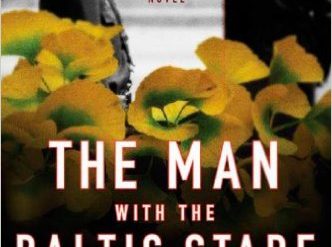
Estimated reading time: 4 minutes
As I draft this review of Jason Matthews’ novel, Red Sparrow, a film based on the book is showing in theaters nationwide. I’ve decided not to view the movie. I can’t imagine that any screen adaptation, however skillful, could possibly do justice to this extraordinary tale of espionage.
Authentic espionage tradecraft
Red Sparrow is not a conventional spy story. True enough, it’s well-written, ingeniously plotted, and endlessly suspenseful. On that account alone, fans of John le Carré, Joseph Kanon, or Alan Furst should appreciate it. But the book rises above the level of the genre because the author has infused it with detailed, intimate knowledge of authentic espionage tradecraft employed both by the CIA and by Russia’s Foreign Intelligence Service, the SVR.
Red Sparrow also reveals a great deal about the SVR’s structure and practices. I was so taken aback by the level of detail that I checked a number of details at random; they all proved accurate. I can easily imagine this novel being passed around at the CIA training center known as the Farm as a fictionalized (if no doubt exaggerated) account of what an officer might encounter in the field.
Red Sparrow (Red Sparrow Trilogy #1) by Jason Matthews (2013) 577 pages ★★★★★
Two central characters in a cat-and-cat game
The Red Sparrow of the title is Dominika Egorova, a niece of the First Deputy Director of the SVR. When an injury ends her promising career in the ballet, her uncle presses her into the intelligence service, sending her first to the standard officer training and then to “Sparrow School,” where she is taught seduce enemy agents. Her assignment is to entrap and recruit Nathaniel Nash, the young CIA officer who is known to be the handler of MARBLE, a high-level mole in the SVR. “Nate was one of a small group of CIA ‘internal ops’ officers trained to operate under surveillance on the opposition’s home ground.” His assignment is to recruit her once she has managed to enter his life. The result can’t be described as a cat-and-mouse game. It’s a cat-and-cat game, and it’s fascinating.
The supporting cast on the American side includes a pair of veteran CIA officers who assist and guide Nate as he maneuvers through his relationship with Dominika. There are also a sociopathic US Senator and a number of FBI agents who wander in and out of the background, all of them coming across as incompetent. (This no doubt reflects the ages-old suspicion between the CIA and the FBI.) On the Russian side, the leading characters include Dominika’s uncle and several members of his staff at the SVR. One key figure there is a “poisonous dwarf” who serves as his counterintelligence chief. (He appears to be modeled on the five-foot-tall Nikolai Yezhov, a sadistic murderer who served for a year as head of Stalin’s secret police. He was known as “The Poison Dwarf.”) Vladimir Putin himself makes several cameo appearances.
About the author
Author Jason Matthews’ official bio (1951-2021) on his publisher’s web site is worth quoting at length: “Jason Matthews is a retired officer of the CIA’s Operations Directorate. Over a thirty-three-year career he served in multiple overseas locations and engaged in clandestine collection of national security intelligence, specializing in denied-area operations. Matthews conducted recruitment operations against Soviet–East European, East Asian, Middle Eastern, and Caribbean targets. As Chief in various CIA Stations, he collaborated with foreign partners in counterproliferation and counterterrorism operations.” In other words, it should be no surprise that Jason Matthews could write a book that exhibits authentic espionage tradecraft. Red Sparrow is the first novel in a trilogy of the same name, all of which feature details of authentic espionage tradecraft.
For related reading
For another excellent recent spy novel with a heavy emphasis on authentic tradecraft, see Damascus Station by David McCloskey (A spellbinding novel about espionage in Syria).
You’ll find this book on The 40 best books of the decade from 2010-19 as well as on my list of The decade’s top 10 historical novels, mysteries & thrillers, and science fiction. It’s also one of The best Russian mysteries and thrillers.
You might also enjoy my posts:
- The 15 best espionage novels
- Good nonfiction books about espionage
- The best spy novelists writing today
- Top 10 mystery and thriller series
And you can always find my most popular reviews, and the most recent ones, on the Home Page.


























